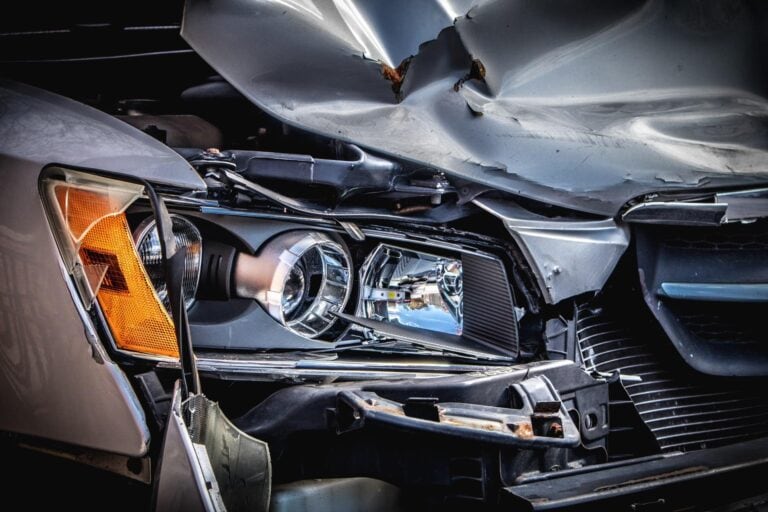According to the National Highway Traffic Safety Administration, over 3 million Americans are injured in car accidents each year.
While you could be the safest driver, remain completely attentive and defensive on the road, and follow all traffic regulations, collisions and accidents can still happen. Some of these result in mild to serious car accident injuries.
Of course, the extent of injuries can depend on several factors during a collision:
- If the occupants were wearing seatbelts or not
- The direction of the impact
- Which way the occupants were facing at the time of impact
- The speed the car(s) were traveling at upon impact
- Airbag deployment
There are two categories of car accident injuries.
Impact injuries occur when the body makes contact with the car’s interior. An example of this would be if an occupant’s head hits the dashboard or steering wheel upon impact.
Penetrating injuries involve cutting, lacerating, or scraping of the skin. This could occur if the window glass is shattered and lodged in the skin or if a seatbelt causes a laceration requiring stitches.
The Most Common Car Accident Injuries
Mild and significant injuries incurred during a car accident can forever change the life of a driver and their passengers. Injuries from a car accident are possible to nearly every part of the body.
While some of these injuries occur immediately, others can come on slowly. Regardless, it is important to seek medical attention to avoid long-term or disastrous effects.
Back and Spinal Injuries
The spine/spinal cord is not designed to withstand heavy impact, making back and spinal injuries some of the most common injuries in the event of a serious car crash. The impact of a car accident on the back and spine can cause lasting effects on both the driver and any passengers.
Long-term disability can occur as a result of a spinal injury sustained in a car crash. Damage to the spinal cord can cause partial or full paralysis depending on the location of the injury. A complete spinal injury occurs when there is no movement and feeling is lost below the location of the injury. An incomplete spinal injury occurs when some feeling and motor function are left below the location of the injury.
Aside from spinal injuries, several different back injuries can occur as a result of car accidents. Back strains and sprains involve pulled muscles and tendons in the back, while other injuries like a ruptured disc or nerve trauma can cause impaired movement and damaged vertebrae.
Internal Injuries and Bleeding
When impact injuries occur, they often leave injuries to the driver and/or passengers that aren’t visible at skin level. These injuries aren’t always immediately treated by medical professionals, leading to extensive trauma or even sudden death.
Blunt force trauma occurs when the body collides with a hard object (like the inside of the car or another car hitting your car). Penetrating trauma occurs when an object breaks skin and tears into blood vessels, muscles, nerves, and organs. Spleen, kidney, and liver injuries are some of the most common penetrating trauma injuries sustained in car accidents.
When major organs, blood vessels, or muscle tissue are damaged, internal bleeding can also occur. Symptoms of internal bleeding can include abdominal pain, fatigue, dehydration, dizziness, nausea, and skin bruising. To avoid serious lasting effects or even sudden death, emergency medical treatment is necessary when blunt force or penetrating trauma occurs in a car accident.
Broken Bones and Ribs
Impact injuries can also result in broken bones or ribs.
Rapid impact with the dashboard, steering wheel, or seatbelt restraint can cause fractured ribs. While these can heal on their own, broken ribs can cause further internal damage such as puncture wounds to organs, muscles, and other tissue.
Broken bones are common in car accidents. While most can heal with a cast, sling, or other protective settings, some broken bones may require surgery to fix. Commonly broken bones in car accidents include bones in the arm, femur, neck, collarbone, and hip.
Concussion
A concussion can occur when there is a traumatic blow to the head. Concussions are considered a more mild form of a traumatic brain injury but must be treated with caution.
Symptoms of a concussion include confusion, headache, memory loss, lack of balance, and vision impairment or changes. Medical providers will often diagnose a concussion and immediately recommend rest and activity restriction. Most concussions can heal within days of an accident if rest and restriction are maintained.
Choose Hann Law Firm for Personal Injury Assistance Today
If you’ve been in a car accident that resulted in mild or serious injuries to you or your loved ones, you may be feeling hopeless, uncertain, and financially strained.
If you’ve been in a car accident, knowing your rights is essential. You could be entitled to lost wages, pain and suffering, the cost of medical bills, and other damages. Unfortunately, without an experienced lawyer on your side, you won’t get everything you’re entitled to.
That’s why you should let Hann Law Firm fight for you.
Legal challenges are always a trying time, especially with personal injury cases. Our compassionate and personalized approach walks you through filing your lawsuit from start to finish.



